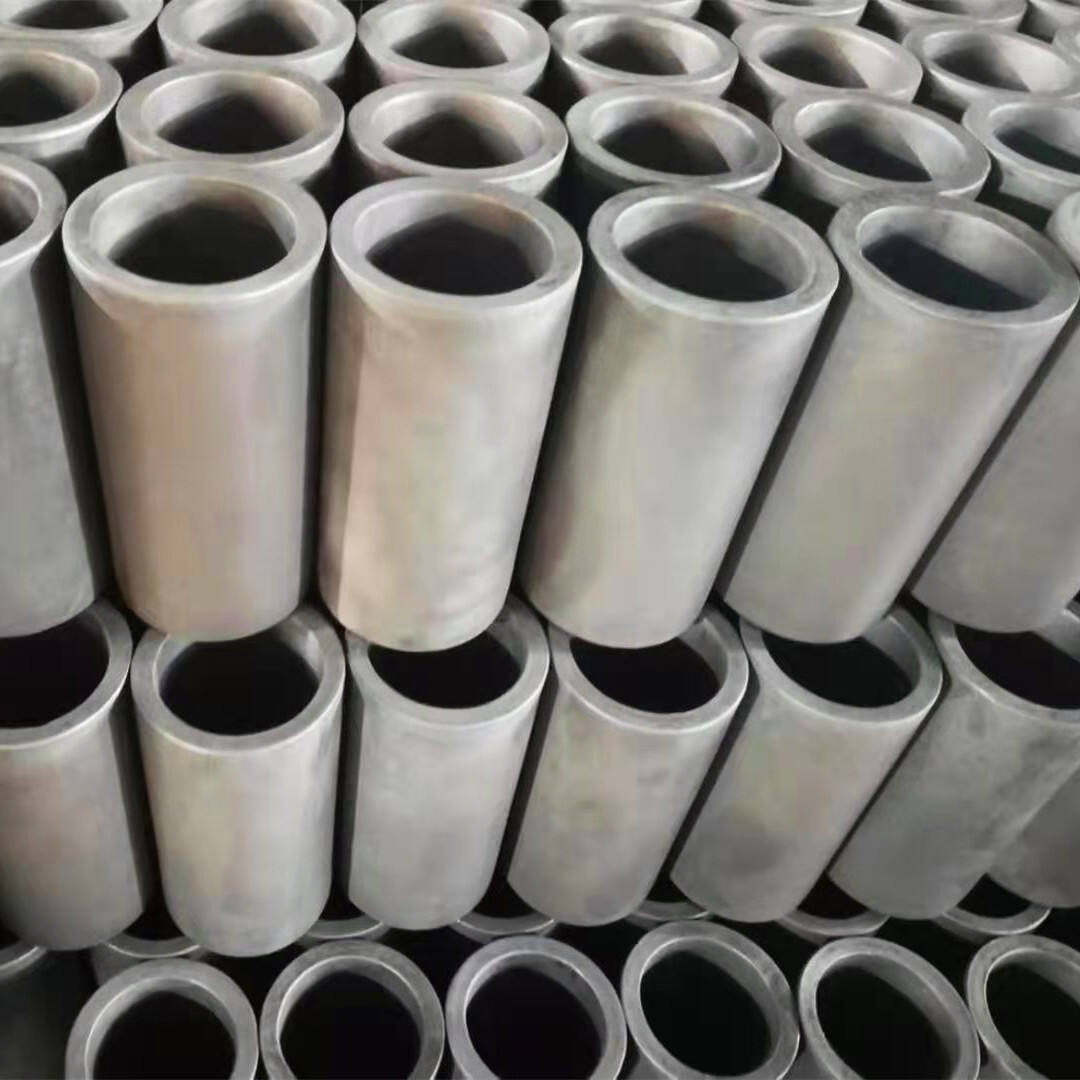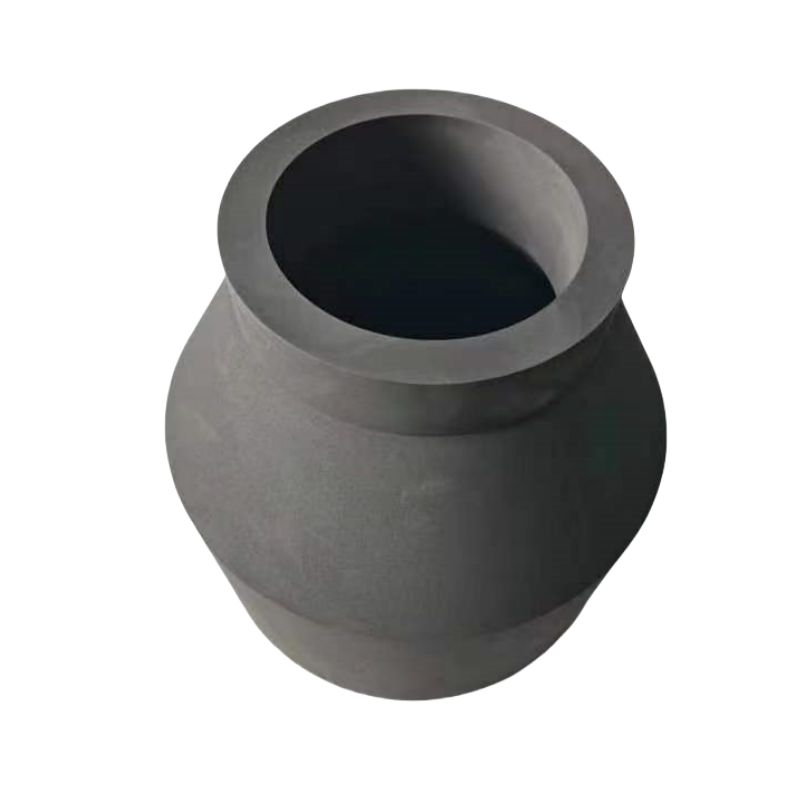การเข้าใจโลกอันหลากหลายของรูปแบบกราไฟต์ธรรมชาติ
กราฟิตฟลัก เป็นหนึ่งในวัสดุที่น่าทึ่งที่สุดซึ่งประกอบด้วยคาร์บอนตามธรรมชาติ โดยมีโครงสร้างแบบชั้นเด่นชัดและคุณสมบัติที่โดดเด่น รูปผลึกของคาร์บอนเหล่านี้ได้กลายเป็นส่วนประกอบที่ขาดไม่ได้ในหลายการประยุกต์ใช้งานทางอุตสาหกรรม ตั้งแต่สารหล่อลื่นไปจนถึงโซลูชันการจัดเก็บพลังงาน การรวมกันอย่างลงตัวของคุณสมบัติด้านการนำความร้อน การนำไฟฟ้า และความเสถียรทางเคมี ทำให้ผงกราไฟต์กลายเป็นส่วนสำคัญในกระบวนการผลิตและเทคโนโลยีสมัยใหม่
วัสดุที่น่าทึ่งเหล่านี้เกิดจากการแปรสภาพของสารอินทรีย์ ซึ่งทำให้เกิดอนุภาคแบนเรียบคล้ายแผ่นที่สามารถแยกออกเป็นชั้นบางๆ ได้อย่างง่ายดาย การที่กราไฟต์ฟลูออรีนพบได้ตามแหล่งสะสมต่างๆ ทั่วโลก ทำให้มีการดำเนินงานขุดเจาะอย่างกว้างขวางเพื่อตอบสนองความต้องการในภาคอุตสาหกรรมที่เพิ่มสูงขึ้น ความหลากหลายในการใช้งานของเกร็ดกราไฟต์ยังคงผลักดันนวัตกรรมในหลายภาคส่วน ทำให้กลายเป็นทรัพยากรที่สำคัญในภูมิทัศน์ทางเทคโนโลยีในปัจจุบัน
คุณสมบัติทางกายภาพและลักษณะเฉพาะ
โครงสร้างและประกอบ
เกร็ดกราไฟต์มีโครงสร้างผลึกแบบชั้นที่โดดเด่น โดยอะตอมของคาร์บอนจัดเรียงตัวกันในรูปแบบหกเหลี่ยม ชั้นเหล่านี้ยึดติดกันด้วยแรงเวนเดอร์วาลส์ที่อ่อนแอ ทำให้สามารถเลื่อนไถลผ่านกันได้อย่างง่ายดาย การจัดเรียงโครงสร้างที่เป็นเอกลักษณ์นี้มีส่วนทำให้เกิดคุณสมบัติการหล่อลื่นตามธรรมชาติและการนำความร้อน เกร็ดกราไฟต์โดยทั่วไปมีขนาดตั้งแต่อนุภาคละเอียดไปจนถึงแผ่นขนาดใหญ่ โดยมีความแตกต่างกันในด้านความหนาและพื้นที่ผิว ขึ้นอยู่กับแหล่งที่มาและวิธีการแปรรูป
ความบริสุทธิ์ของเกล็ดกราไฟต์สามารถแปรผันได้มาก โดยทั่วไปอยู่ในช่วงร้อยละ 80 ถึง 99.9 ของปริมาณคาร์บอน ระดับความบริสุทธิ์ที่สูงขึ้นโดยทั่วไปสอดคล้องกับประสิทธิภาพที่ดีกว่าในงานเฉพาะทาง โดยเฉพาะในภาคเทคโนโลยีขั้นสูง โครงสร้างผลึกยังมีอิทธิพลต่อความสามารถในการแทรกสารต่างๆ ระหว่างชั้นของเกล็ดกราไฟต์ ทำให้มีคุณค่าในกระบวนการทางเคมีหลายประการ
ลักษณะสมรรถนะ
ความสามารถในการนำความร้อนและไฟฟ้าของเกล็ดกราไฟต์ทำให้มันมีประสิทธิภาพยอดเยี่ยมในหลากหลายการใช้งาน มันแสดงคุณสมบัติในการกระจายความร้อนได้ดีเยี่ยม จึงเหมาะสำหรับโซลูชันการจัดการความร้อน การนำไฟฟ้าที่ดีควบคู่ไปกับความเสถียรทางเคมี ทำให้สามารถนำไปใช้ในอุปกรณ์จัดเก็บพลังงานและการใช้งานทางไฟฟ้าได้
นอกจากนี้ เศษกราไฟต์ยังแสดงถึงคุณสมบัติทางกลที่โดดเด่น ได้แก่ ความแข็งแรงต่อการอัดสูงและค่าสัมประสิทธิ์แรงเสียดทานต่ำ คุณลักษณะเหล่านี้ทำให้มันมีคุณค่าอย่างยิ่งในการประยุกต์ใช้เป็นสารหล่อลื่นและในวัสดุคอมโพสิต ความต้านทานต่ออุณหภูมิสูงและการกัดกร่อนจากสารเคมียังช่วยเพิ่มประสิทธิภาพการใช้งานในสภาพแวดล้อมอุตสาหกรรมที่ต้องการความทนทานสูง

การใช้งานและประโยชน์ใช้สอยในอุตสาหกรรม
การจัดเก็บพลังงาน
ในภาคพลังงานที่กำลังเปลี่ยนแปลงอย่างรวดเร็ว เศษกราไฟต์มีบทบาทสำคัญในเทคโนโลยีแบตเตอรี่ โดยทำหน้าที่เป็นวัสดุหลักในการสร้างขั้วบวกในแบตเตอรี่ลิเธียมไอออน ซึ่งโครงสร้างแบบชั้นของมันช่วยให้เกิดกระบวนการแทรกตัวของไอออนลิเธียม ตลาดรถยนต์ไฟฟ้าที่ขยายตัวอย่างต่อเนื่องได้ส่งผลให้ความต้องการเศษกราไฟต์คุณภาพสูงเพิ่มขึ้นอย่างมาก เนื่องจากรถยนต์ไฟฟ้าแต่ละคันต้องใช้กราไฟต์ปริมาณมากสำหรับระบบแบตเตอรี่
นอกเหนือจากการใช้งานในอุตสาหกรรมยานยนต์ เกล็ดกราไฟต์ยังมีความสำคัญในระบบการจัดเก็บพลังงานขนาดใหญ่และอุปกรณ์อิเล็กทรอนิกส์พกพา คุณสมบัติด้านความเสถียรและการนำไฟฟ้าทำให้เหมาะสำหรับโซลูชันการจัดเก็บพลังงานระยะยาว ซึ่งช่วยสนับสนุนการพัฒนาการรวมพลังงานหมุนเวียน
วัสดุขั้นสูงและวัสดุผสม
การนำเข้าของเกล็ดกราไฟต์ในวัสดุผสมได้ปฏิวัติอุตสาหกรรมต่างๆ เมื่อนำไปรวมกับพอลิเมอร์หรือโลหะ จะช่วยเพิ่มการนำความร้อน ความแข็งแรงเชิงกล และคุณสมบัติด้านไฟฟ้าของวัสดุผสมที่ได้ วัสดุที่ได้รับการปรับปรุงเหล่านี้ถูกนำไปใช้ในชิ้นส่วนอากาศยาน ชิ้นส่วนยานยนต์ และอุปกรณ์อุตสาหกรรม
ในด้านการจัดการความร้อน เกล็ดกราไฟต์ถูกใช้ในการผลิตวัสดุระหว่างผิวสัมผัสทางความร้อนและแผ่นกระจายความร้อน ความสามารถตามธรรมชาติในการนำความร้อนทำให้มีคุณค่าอย่างมากในอุปกรณ์อิเล็กทรอนิกส์ที่การจัดการความร้อนมีความสำคัญต่อประสิทธิภาพและการใช้งานระยะยาว
เทคนิคการแปรรูปและการผลิต
การสกัดและกลั่น
กระบวนการของแผ่นกราไฟต์เริ่มต้นจากการดำเนินงานเหมืองแร่ ซึ่งจะขุดแร่ที่มีกราไฟต์ธรรมชาติออกมา จากนั้นกระบวนการแปรรูปต่อไปจะประกอบด้วยหลายขั้นตอนของการลอยตัวและปฏิกิริยาทางเคมี เพื่อแยกแผ่นกราไฟต์ออกจากวัสดุหินที่อยู่ร่วมกัน เทคนิคการแปรรูปขั้นสูงสามารถทำให้ได้ระดับความบริสุทธิ์ที่สูงขึ้น แม้ว่าโดยทั่วไปจะทำให้ต้นทุนการผลิตเพิ่มขึ้น
วิธีการกลั่นสมัยใหม่รวมถึงกระบวนการทางกลและทางเคมี เพื่อเพิ่มคุณภาพและความสม่ำเสมอของแผ่นกราไฟต์ ขั้นตอนการคัดขนาดและการบำบัดพื้นผิวช่วยให้มั่นใจได้ว่าผลิตภัณฑ์สุดท้ายจะเป็นไปตามข้อกำหนดเฉพาะสำหรับการใช้งานต่างๆ ความต้องการแผ่นกราไฟต์ความบริสุทธิ์สูงที่เพิ่มขึ้น ได้ส่งผลให้มีการปรับปรุงเทคโนโลยีการแปรรูปอย่างต่อเนื่อง
การควบคุมคุณภาพและข้อกำหนด
มาตรการควบคุมคุณภาพอย่างเข้มงวดมีความจำเป็นอย่างยิ่งในการผลิตผงกราไฟต์ พารามิเตอร์ต่างๆ เช่น การกระจายขนาดของอนุภาค ปริมาณคาร์บอน ปริมาณเถ้า และระดับความชื้น จะได้รับการตรวจสอบอย่างรอบคอบตลอดกระบวนการผลิต พารามิเตอร์เหล่านี้มีผลกระทบโดยตรงต่อประสิทธิภาพของผงกราไฟต์ในงานประยุกต์ใช้งานที่กำหนดไว้
มาตรฐานอุตสาหกรรมและข้อกำหนดของลูกค้าเป็นแนวทางในการพัฒนาขั้นตอนการควบคุมคุณภาพ มีการใช้เทคนิคการวิเคราะห์ขั้นสูง เช่น การเลี้ยวเบนรังสีเอกซ์ (X-ray diffraction) และกล้องจุลทรรศน์อิเล็กตรอนแบบส่องกวาด (scanning electron microscopy) เพื่อยืนยันลักษณะของผลิตภัณฑ์และรับประกันความสม่ำเสมอระหว่างชุดการผลิต
การประยุกต์ใช้งานใหม่และแนวโน้มในอนาคต
การบูรณาการเทคโนโลยีที่ยั่งยืน
บทบาทของผงกราไฟต์ในเทคโนโลยีที่ยั่งยืนยังคงขยายตัวอย่างต่อเนื่อง การนำไปประยุกต์ใช้ในโซลูชันพลังงานสะอาด เช่น แผงโซลาร์เซลล์และกังหันลม แสดงให้เห็นถึงความสำคัญของผงกราไฟต์ในการเปลี่ยนผ่านไปสู่แหล่งพลังงานหมุนเวียน การวิจัยเกี่ยวกับการประยุกต์ใช้ใหม่ๆ มุ่งเน้นไปที่การเพิ่มประสิทธิภาพสูงสุดพร้อมทั้งลดผลกระทบต่อสิ่งแวดล้อม
นวัตกรรมในกระบวนการรีไซเคิลและกู้คืนมีเป้าหมายเพื่อสร้างห่วงโซ่อุปทานที่ยั่งยืนมากขึ้นสำหรับแผ่นกราไฟต์ โดยเมื่อพิจารณาด้านสิ่งแวดล้อมมีความสำคัญเพิ่มมากขึ้น การพัฒนาวิธีการและแอปพลิเคชันที่เป็นมิตรต่อสิ่งแวดล้อมจึงยังคงเป็นลำดับความสำคัญ
แนวหน้าของการวิจัยและพัฒนา
การวิจัยที่ดำเนินอยู่กำลังสำรวจการใช้งานใหม่ๆ สำหรับแผ่นกราไฟต์ในเทคโนโลยีที่กำลังเกิดขึ้น สาขาที่ได้รับความสนใจเป็นพิเศษ ได้แก่ ระบบการจัดเก็บพลังงานขั้นสูง ส่วนประกอบสำหรับคอมพิวเตอร์ควอนตัม และอุปกรณ์อิเล็กทรอนิกส์รุ่นถัดไป การพัฒนาเทคนิคการแปรรูปใหม่ๆ และการปรับเปลี่ยนผิวอย่างต่อเนื่องยังคงเปิดโอกาสใหม่ๆ เพิ่มเติม
การประยุกต์ใช้ในอนาคตอาจรวมถึงโซลูชันการจัดการความร้อนที่ดีขึ้นสำหรับโครงสร้างพื้นฐาน 5G วัสดุการบินและอวกาศที่มีคุณสมบัติการทำงานที่ดีขึ้น และเทคโนโลยีการจัดเก็บพลังงานรูปแบบใหม่ ความหลากหลายของแผ่นกราไฟต์บ่งชี้ถึงความเป็นไปได้นับไม่ถ้วนสำหรับความก้าวหน้าทางเทคโนโลยีในอนาคต
คำถามที่พบบ่อย
แผ่นกราไฟต์แตกต่างจากกราไฟต์รูปแบบอื่นอย่างไร
แผ่นกราไฟต์มีลักษณะเฉพาะคือโครงสร้างเป็นแผ่นและรูปผลึกตามธรรมชาติ ซึ่งต่างจากกราไฟต์ชนิดไม่มีรูปผลึกหรือกราไฟต์สังเคราะห์ โดยมีคุณสมบัติในการนำความร้อนและนำไฟฟ้าได้ดีกว่าเนื่องจากการจัดเรียงชั้นของอะตอมคาร์บอน โครงสร้างพิเศษนี้ทำให้มันมีคุณค่าอย่างยิ่งในงานอุตสาหกรรมเฉพาะด้าน
การแบ่งประเภทของแผ่นกราไฟต์ตามขนาดทำอย่างไร
แผ่นกราไฟต์มักถูกจำแนกตามขนาดตาข่าย (mesh) ตั้งแต่ขนาดเล็ก (เล็กกว่า 150 mesh) ไปจนถึงขนาดใหญ่ (ใหญ่กว่า 50 mesh) การจัดประเภทตามขนาดนี้มีความสำคัญต่อการใช้งานที่แตกต่างกัน โดยทั่วไปแผ่นขนาดใหญ่จะมีราคาสูงกว่าเนื่องจากประสิทธิภาพที่ดีกว่าในการใช้งานบางประเภท
ปัจจัยใดบ้างที่มีผลต่อคุณภาพของแผ่นกราไฟต์
คุณภาพของผงกราไฟต์ถูกกำหนดโดยปัจจัยหลายประการ ได้แก่ ปริมาณคาร์บอน การกระจายตัวของขนาดอนุภาค ปริมาณสารตกค้าง (แอช) และระดับความชื้น แหล่งที่มาของกราไฟต์ วิธีการขุดเจาะ และเทคนิคการแปรรูปล้วนมีบทบาทสำคัญในการกำหนดคุณภาพสุดท้าย ระดับความบริสุทธิ์ที่สูงกว่ามักบ่งชี้ถึงคุณภาพที่ดีกว่า และสามารถตั้งราคาได้สูงในตลาด






